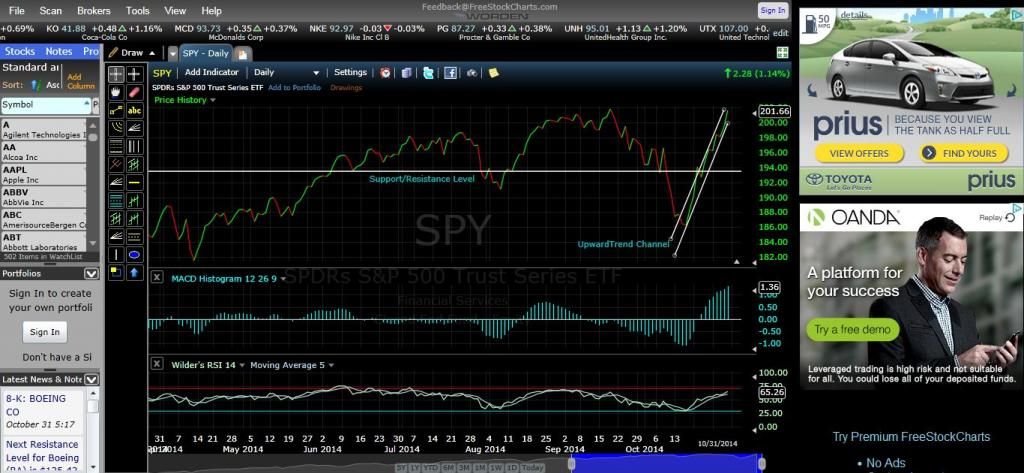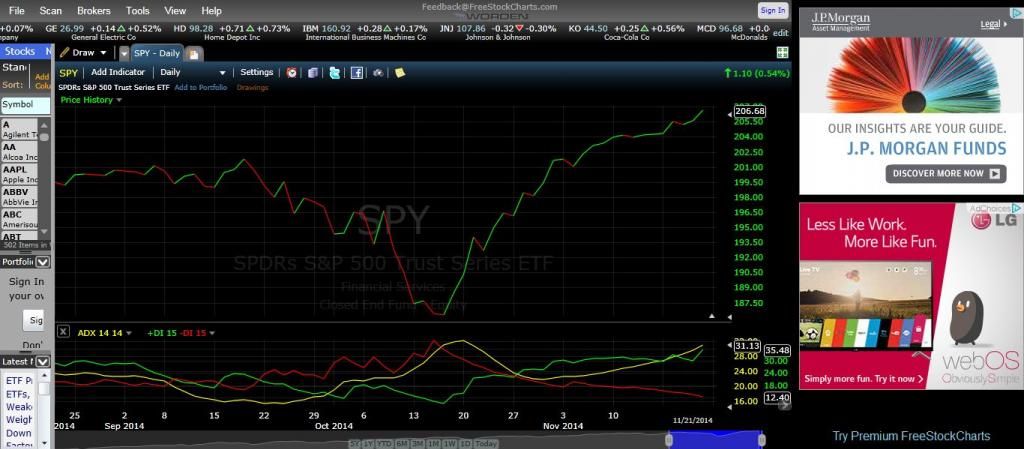Ordinary Options - OPTIMIZED © 2014-2017
Guide Series
Guide Series
NOTE: This presentation should be viewed sequentially in the order (1) to (12)
(1) OVERVIEW: Getting Started in Optimized Trading of Ordinary, Legitimate Stock Options - A Guide Series
NOTE: Options trading may not be suitable for all investors. Trade with risk capital only.
This short guide series is intended to be an introduction to 'SIMPLIFIED OPTIONS TRADING'. IT DEFINITELY WILL NOT BE A COURSE ON 'OPTIONS TRADING MADE SIMPLE'. Nothing of value regarding stock market trading and stock options trading especially, can be made simple.
So how does this strategy relate to the topic customarily referred to as 'Binary Options'? --- Well, in name only.
When this guide series is over, and if you are still with me and willing, you will be faced with only TWO (ie. binary) OPTION TRADING ALTERNATIVES in the market: Either BUYING [1] a CALL (you predict stock price will go up significantly), or [2] a PUT (you predict stock price will go down significantly) on a SINGLE, CONSTANT CITED STOCK, in a SINGLE, CONSTANT CITED OPTION STRIKE PRICE RANGE CATEGORY, for a SINGLE, CONSTANT CITED OPTION EXPIRATION PERIOD. Thus, I believe the strategy can accurately be referred to as 'binary'.
Thus, when planning a trade, you can FOCUS all your attention on JUST ONE CRITICAL DECISION, and it is often a difficult one to make intelligently -- Is the base stock price likely to go UP or DOWN significantly within the next few days or perhaps up to a week or two.
The base 'stock' you will be working with EXCLUSIVELY is actually a major, high volume, extremely liquid ETF (Exchange Traded Fund) having the symbol 'SPY'. It closely tracks the S&P 500. Options based on 'SPY' are extremely easy to buy and sell and have a very narrow 'bid/ask' price spread. That is, you will not be expending excessive funds on trading costs, which occurs when trading options on lower volume, ordinary stocks.
The estimated leverage on the strategy is usually up to 20x or more. That is, if the base stock price INCREASES by 1%, for example, during your option holding period, your CALL OPTION value should increase by up to 20% or more. As another example, if the base stock price DECREASES by 2%, during your option holding period, your PUT OPTION value should increase by up to 40% or more. Of course, you must be successful in your prediction on the base stock (S&P 500) price movement direction and also nimble in your timing in order to realize a good profit on your endeavor. Negative leverage on loosing option plays can be very high since the option value can go to zero if it is allowed to expire worthless on its expiration date.
With everything else remaining equal, the longer you hold a profitable option the lower the leverage since options lose value with time. The law of 'supply and demand' also impacts the leverage realized on the trade since options increasing in demand, for example, by buyers during the holding period will develop added value if all else remains constant.
Your normal holding period for the option will generally be in the range from only a few days up to a perhaps a week.
It is important that the option be closed as soon as market conditions indicate since options lose value with time, with the speed of decline increasing as the option approaches its expiration date.
You can close out your position and cut losses, if desired, at any time of your choice. You can not lose more money than you commit, not counting normal, modest trade commissions to the brokerage firm. You will be dealing directly with your own, chosen, reputable, major, no-scam stock and options brokerage firm.
Consider that a 20% return, for example, on your money in a week's time is equivalent to a 1040% return, calculated on an annual basis.
- Is the strategy risky? - YES - (ANY strategy with up to 20x or more leverage is risky).
- Is the strategy challenging? - DEFINITELY.
- Is it fun? - I say, YES.
Guide for the 'Ordinary Options - OPTIMIZED' strategy : "The Trend is Your Friend." -- Take profits to sell your options quickly and often. YOU WILL NEVER GO BROKE TAKING PROFITS. This can be done most conveniently using 'LIMIT' orders, usually when a pre-selected, reasonable profit has been achieved. If desired, Limit orders can also be set to activate near support/resistance levels during downward trends or near anticipated momentum-pause levels during upward trends reaching to new highs. SELL LIMIT ORDERS are very helpful for minimizing personal stress and option run-time. After the option sell, take a break until the likely direction trend of future market movement can be intelligently judged.
PLEASE BE ADVISED: THE GREAT MAJORITY OF ORDINARY TRADERS LOSE MONEY BUYING OPTIONS, FOR A WIDE VARIETY OF REASONS. IT IS DEFINITELY NOT AN ENDEAVOR SUITABLE FOR THOSE FAINT OF HEART OR THOSE WISHING TO MAKE QUICK, EASY MONEY IN THE MARKET.
For those readers who might be interested in learning how to trade ORDINARY, LEGITIMATE STOCK OPTIONS through a conventional brokerage firm, I suggest they start by reading a good book on Technical Analysis in order to better understand market fundamentals and stock price movements.
One recommended book is:
"Technical Analysis Plain and Simple: Charting the Markets in Your Language" (3rd Edition) Hardcover, by Michael N. Kahn
The 352 page hardcover book can now be obtained new through Amazon, for example, for prices usually in the $16 to $21 range. Good Condition used copies are usually available through Amazon in the $6 to $7 price range.
http://www.amazon.com/Technical-Anal.../dp/0137042019



Comment